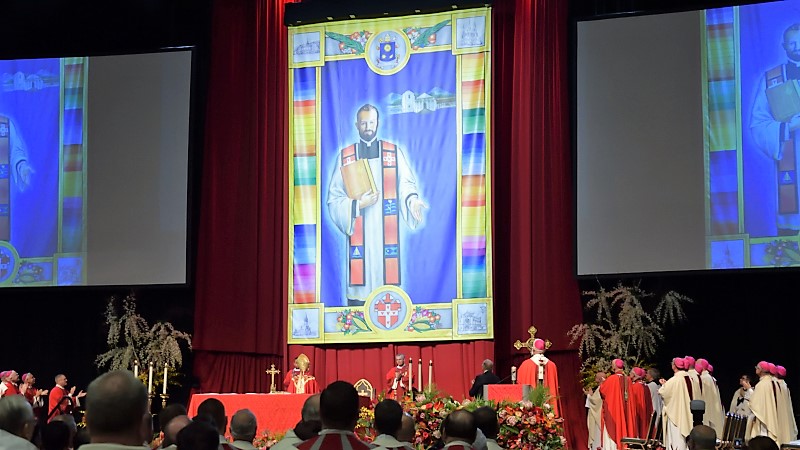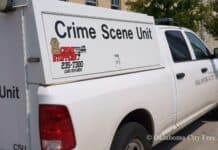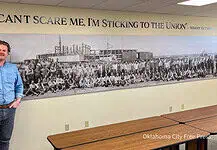Martyred Okarche native Father Stanley Rother was beatified, or declared blessed, in an elaborate and moving Mass Saturday.

Over 20,000 attended at the Cox Convention Center in downtown Oklahoma City.
He is the first American-born martyr and the first U.S. priest to be beatified.
Rother’s beatification comes nine months after Pope Francis declared him a martyr of the faith.
He is the latest on a list of only 78 martyrs in the entire history of the church.
He is now only one step away from canonization, the church’s declaration that a person is “a saint in heaven with God.”
Beatification is the declaration that Father Rother lived a holy life and is a good example to follow. Catholics will now celebrate a feast day for him each year July 28, the anniversary of his murder in 1981.
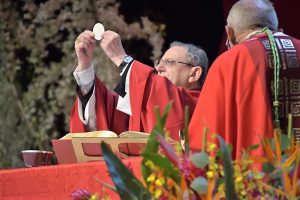
The Mass was conducted by Angelo Cardinal Amato, S.D.B. who came from Rome to conduct the beatification.
“His blood, united to that precious Blood of Jesus, purifies and redeems even his enemies, who are loved and also forgiven,“ Amato said of Rother in his homily.
Amato is the Prefect of the Congregation for the Causes of Saints in Rome. As such, he is the one who coordinates investigations of causes and then makes recommendations to Pope Francis for those who are blessed and canonized.
Much fruit
The key scripture used in the Beatification Mass was an appropriate one for blessing a martyr.
Unless a grain of wheat falls to the ground and dies, it just remains a grain of wheat; but if it dies, it produces much fruit. (John 12:24)
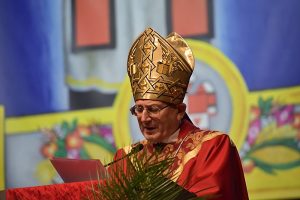
In his homily, Cardinal Amato explained the circumstances of Rother’s death in the mission in Guatemala with a level of detail that might have startled some.
“From 1971 until 1981, numerous killings of journalists, farmers, catechists and priests, all falsely accused of communism, took place in Guatemala,” said Amato. “This was a real and true time of bloody persecution for the church.”
Subversive love
Rother ran afoul of government troops and their informal death squads that kidnapped and tortured people in Santiago Atitlan where the mission was located.
He would go find the bodies of his tortured, assasinated parishioners left on the side of the road as an example and bury them. He would then care for their widows.

Those simple acts of compassion were considered to be subversive by the right-wing government in Guatemala at the time.
In addition, Rother had used his knowledge of farming from his childhood in Okarche to help his people begin to grow their own crops and form food co-ops.
Again, the Guatemalan government considered Rother’s encouragement of his parishioners’ independence to be subversive.
Death list
Eventually Rother was told that he was on a death list. His bishop called him back to Oklahoma for his own safety.
But he couldn’t stay. He told family members who tried to keep him from returning to the mission “The good shepherd does not abandon his flock in danger. The shepherd cannot run.”
And so he returned.
Then, soon after his return, around 1 a.m. July 28, three gunmen broke into the rectory at the mission. Rother had already decided he would not be taken alive to be tortured and so he fought back.
The death squad ended the fight with two gunshots to Rother’s head.
Saint?
The next step is canonization or sainthood. A verified miracle that cannot be explained any other way will have to be attributed to him before he will be considered.
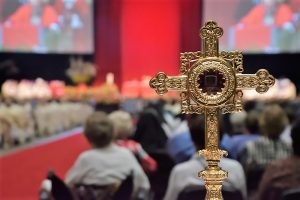
Saints are not worshiped, but venerated as examples of faithfulness and as those who can intercede with God in heaven on behalf of the faithful on earth.
Rother’s cause was taken up by both his former parishioners in Guatemala and his home diocese in Oklahoma.
After seven years of research in the archdiocese of Oklahoma, and an elaborate process of examining Rother’s writings, teachings, work, outcomes of his mission work, death and even his exhumed body, and a commission giving the go-ahead, the Pope made an official declaration of martyrdom.
George Rigazzi, archivist for the Oklahoma City Archdiocese was one of four on a committee that did the research.
They examined everything Rother had ever said or written. In the end, they submitted “about 7,000 documents” to Rome, Rigazzi said.
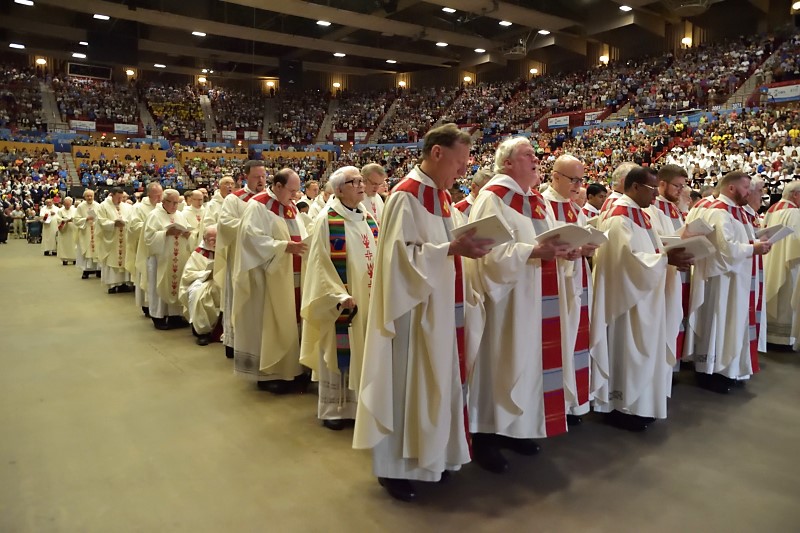
Brett is the founder, and editor in chief of Oklahoma City Free Press. He continues to contribute reporting and photography to the efforts of the publication as well as leadership in developing support.
